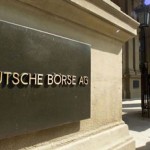Investors worldwide have poured a record amount into bond funds this year

Investors worldwide have poured $202 billion into bond funds this year, according to J.P. Morgan Chase — a record amount compared to equity funds. How’s that working out?
At least so far this year, pretty well. In the longer run, however, their riskier choices are likely to end badly.
The Morningstar US Long Core Total Return Bond index has gained 12.59% in 2016, vs. 8.32% for the Standard & Poor’s 500 stock index with dividends reinvested. Corporate long-term bonds have gained 14.48%.
Powering the bond rally is an enormous thirst for yield, fueled by negative interest rates in nearly a quarter of the world. About $8 trillion of government bonds worldwide offered yields below zero, according to Bloomberg, affecting some 500 million people. Even though the bellwether 10-year Treasury note yields just 1.54%, that yield is far more appealing than a guaranteed loss.
- Intermediate-term bonds took in $15 billion last month — the largest inflow of any Morningstar category
Investors’ love for bonds continued in July, with intermediate-term bonds seeing an inflow of $15 billion for the month — the largest inflow of any Morningstar category. Intermediate-term bonds, which have gained 4.74% the past 12 months, have led Morningstar’s monthly report for the past five months. At the same time, investors — mainly with advisers at their sides — yanked $27.3 billion from U.S. stock funds and $5.3 billion from international stock funds.
For the most part, investors seem to be driven by fear, not greed, said Todd Rosenbluth, director of ETF and mutual fund research at S&P Global Market Intelligence. “There’s a nervousness among investors, given that we’re in the 8th year of a bull market,” Mr. Rosenbluth said. Rotating into investment-grade corporates isn’t exactly a daring move. “Verizon, ATT, General Electric are all doing fine.”
Investors also seem to be less convinced that passively managed fixed income funds are better than actively managed ones, Mr. Rosenbluth said, despite the fact that any supporting data for active management is “mixed at best.” Investors put $13.5 billion into actively managed bond funds, vs. $20.5 billion for passively managed once. In contrast, investors pulled $32.9 billion from actively managed stock funds and added $33.8 billion to actively managed stock funds.
The big worry is whether investors are seeking riskier types of bonds in their search for yield. Unfortunately, the answer seems to be “yes.” High-yield bonds, which have returned an average 13.59% this year, saw a $3.2 billion inflow in July. Emerging-markets bond funds saw a $2.9 billion inflow. Those funds have gained 12.88% this year.
Rising interest rates could short-circuit any bond rally, although that doesn’t seem to be a danger in Europe, where the economy is still stagnant. But both high-yield funds and emerging-markets funds could take significant hits if the U.S. or world economy falls further.
Source: Investment News





























